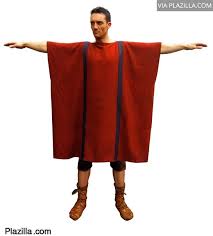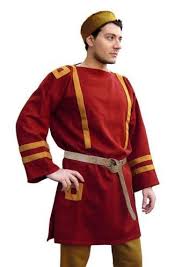Origins Shirt - Shirt through the ages
2017-09-19 10:37:15
Origins Shirt - Shirt through the ages

The shirt through the ages. The origin of the Shirt.
The shirt has played a supporting role in fashion for a long time. But it is such a characteristic supporting role that it should be honored with an Oscar for years of loyal, even centuries-long service to the body of the man. In fact, the shirt is one of the original forms of our clothing. Since man put a cloth over his head to make it - like a poncho - offer protection at the front and back and he then put the side seams together, there is a shirt.
For centuries the man who showed himself only in his shirt during the day was a wretch. A gentleman from his stand covered his shirt and in a sophisticated but unmistakable way he knew that he did not want to be counted among the working class. (An immaculate white collar and cuffs also point in that direction for years.) When it really comes to work and decisions are made, shirt sleeves in the business world are justifiable. Then the jackets must go out. In many countries it is customary - especially with ladies in the company - to ask if the jacket is allowed. It is a remnant of the etiquette that men, until the 1950s, ordered not to show themselves in shirtsleeves. Unless the sleeves were attached to a sports cap. That was just the brace, but otherwise a man was supposed to cover his shirt.
The Tunica
The entire history of the shirt is one of covering and revealing, whereby the shirt alternately occupied the function of practical undershirt or gaudy garment of which collar and cuff competed for attention with the other parts of the outfit. A shirt could also act as an independent outer garment in a solo roll. Costume experts named such a garment (a straight body with two cut or fitted sleeves) with the collective name tunica. In the history of fashion a very spacious place has been reserved for that tunic. Let us look back to where, according to the experts, we should also situate Paradise: between Euphrates and Tigris.
There the aggressive Assyrians and later the Babylonians went from 2000 to 500 BC. dressed in a pretty tight-fitting shirt with short sleeves. With the common man, the knees remained exposed, the higher positions chose longer models that were richly decorated, as well as the broad and long wrapped scarves that colored nicely with the gold thread that was woven with the artfully curved beards. A grace that we do not quickly associate with heroic and cruel behavior. History knows better.

Great wars were fought in the most beautifully-crafted clothes.
The shirt and the old Egyptians
The ancient Egyptians on either side of the Nile shores usually kept it on freshly laundered white linen. At least that part of the population that was fortunate not to have been born a slave. Slaves were exposed through life (a fact that the spectacle filmmakers in Hollywood for the sake of decency obscured by imaginative textile envelopes) or were given a minimal lumbar or shawl. They were not so far away from their bosses, whose torso often remained bared or partly hidden behind a crinkled cover.
Egyptian ladies sometimes wore a shirt, which is believed to have elastic qualities, because it covered the hips, waist and diaphragm so tightly. The breasts were released or only partially covered by narrow braces that kept this shirt in place. But actually we can count the times of the Ancient Egyptians, Greeks and Romans to the 'unmarried' periods in which they draped themselves into wide tissues, although the tunica was still worn in different variations. To the misconceptions of classicist sculptors of two centuries ago, we owe the conviction that Greek warriors with almost nothing bumped into the war. However, the Greeks were smart enough to reinforce short tunicas with leather and metal to withstand light blows and bumps.

The shirt and the Romans
The Romans wore tunicas under their richly draped gowns, super-shawls that could only be wrapped around with a slave and who (how chic!) Wrapped one arm as if he had to be cautiously worn in a sling. Or under their cuirass, a chest harness that often provided the warrior with a tougher anatomy, where the shirt shape folded like a graceful short skirt. And with that underlying position of the shirt an important function came into play: a protective layer between house and outerwear. The protective factor was twofold: the pressure of the richly worked outerwear was felt less directly on the skin and the outerwear was less exposed to the often not always clean skin.
A shirt was (and is) basically an easy-to-clean intermediate layer, although the frequency and the degree of cleaning varied over the course of the centuries. With the improvement of the protection of the body (especially in the times after 1300, when the outerwear became heavy and for the sake of combatting the skin it was used to treat fur with hairy silk to the skin, and it became absolutely necessary to wear a shirt) the characteristic shape of the shirt grew. To soften the rough pressure at the edges of the outerwear, the shirt was extended at the sleeves, at the neck and sometimes at the bottom. Cuff and collar were born.
Shirts in wool and linen







